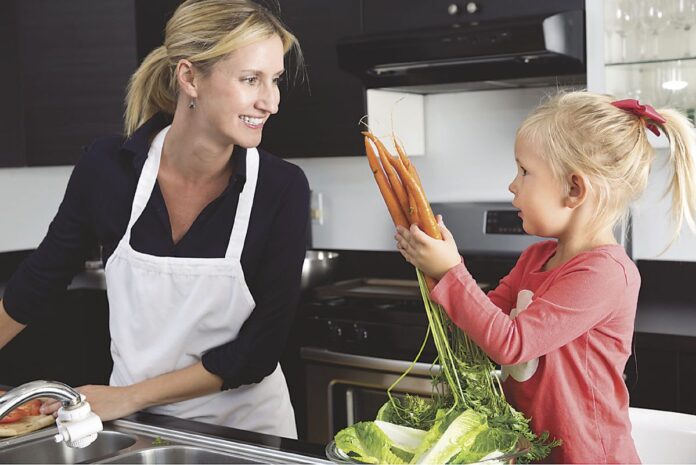BY R. Suresh Ratnam and Diana F. Ramirez | Special to The Monitor
Diabetes and cancer are significant health concerns in the Rio Grande Valley. The link between diabetes and cancer is clearly established. I see it daily in my practice, and statistics verify my patient experiences.
Approximately 20 percent of all adult cancer patients in Texas have also been diagnosed with diabetes. More than 100,000 RGV adults have diabetes, some 70,000 of which are in the McAllen area. About 13 percent of Texas adults in RGV border counties have been diagnosed with diabetes. Nationwide, Texas ranks seventh in the prevalence of diabetes and fourth in prevalence of cancer. In the Valley, more than 4,500 people are expected to be diagnosed with cancer this year, and the diabetes rate is higher than the state average.
Fortunately, there are things we can do to lower the likelihood of becoming one of these statistics. Adopting healthy habits can greatly reduce the risk of developing type 2 diabetes and certain cancers.
Health Implications Associated with Diabetes
Diabetes causes blood sugar levels to rise higher than normal. Those with type 2 diabetes have insulin resistance. Although the pancreas tries to compensate by making more insulin, it is unable to make enough insulin over time to keep blood sugar at normal levels. Diabetes can lead to many complications, including heart disease, eye issues, nerve damage, stroke and colon cancer. type 2 diabetes also increases the risk of dying from breast, colorectal, liver and pancreas cancers.
Shared Cancer and Type 2 Diabetes Risk Factors
Although potential biologic links between cancer and Type 2 diabetes are not completely understood, the two diseases share several common risk factors:
>> Age: The risk of developing type 2 diabetes and cancer increases with age. Nearly 25 percent of Texans age 65 and older have diabetes, while 87 percent of all cancers in the U.S. are diagnosed in people 50 years of age or older.
>> Gender: Men are at a higher risk for both cancer and diabetes.
>> Race: African Americans and Caucasians have a higher risk of developing cancer, while African Americans, Hispanics/Latinos, Asian Americans, and Native Americans are at a higher risk of developing type 2 diabetes.
>> Weight: Obesity increases the risk of diabetes and some cancers.
>> Inactivity: A sedentary lifestyle with little physical exercise increases the risk of type 2 diabetes and certain cancers.
>> Smoking: Studies suggest that smoking significantly increases the risk for Type 2 diabetes. Smoking also raises risk of developing 18 types of cancer, including oral, pancreatic, bladder, cervical, kidney, colorectal and esophageal cancers.
>> Alcohol: Excessive drinking raises the risk for both diabetes and cancer.
Healthy Tips to Lower the Risk of Cancer and Type 2 Diabetes
To reduce the risk of Type 2 diabetes and cancer, adults should adopt healthy habits, including:
>> Maintain a healthy weight.
>> Eat a healthy diet. Managing your weight and eating a balanced diet may bolster your body’s defenses against cancer and diabetes. Choose whole grains over highly processed carbohydrates. Drink water, coffee, or tea rather than sugary drinks. Eat nuts, poultry, or fish while limiting red meat and processed meat.
>> Exercise. Work your muscles to improve their ability to absorb insulin. Walking briskly for 30 minutes a day can help reduce the risk of diabetes. The American Cancer Society recommends that healthy adults participate in a minimum of 75 to 150 minutes of moderate to vigorous exercise spread throughout the week to maintain health and reduce the risk of disease, including cancer.
>> Do not smoke. The body often can repair damage from harmful behavior like smoking, but it requires stopping the harmful behavior. Quitting smoking before age 40 reduces risk of death from a smoking-related cause by 90 percent.
>> Consume alcohol only in moderation. More than one alcoholic drink a day for women or two drinks a day for men increases the risk for both diabetes and cancer.
>> Get regular cancer screenings. Screenings can help detect cancers at their earliest and most treatable stages. Ask your doctor when you should have important screenings, and then schedule them.
These healthy behaviors can help all RGV residents by reducing the risk of diabetes and cancer. These good habits can prolong life and greatly enhance quality of life as we age.
Suresh Ratnam, M.D., FACP, is a medical oncologist at Texas Oncology–McAllen, 1901 South 2nd Street in McAllen. For more information, visit TexasOncology.com or call (956) 687-5150. Ramirez is the executive director the Rio Grande Valle Diabetes Association.
The Rio Grande Valley Diabetes Association offers a free monthly cooking class.
Cantaloupe Avocado Soup
Directions
1. Blend cantaloupe, avocado, Almond Breeze, basil, mint, lemon zest, and lemon juice together until very smooth.
2. Season to taste with salt and pepper. Serve immediately with desired garnishes.
Notes: Start with cold ingredients so you don’t have to chill the soup after you blend it (the avocados will oxidize and turn the soup brown if you reserve it in the fridge.
Ingredients
>> 4 cups diced cantaloupe
>> 1 ripe avocado (skin and pit removed)
>> 1 cup Almond Breeze Unsweetened Original (or for extra creaminess use Almond Breeze Unsweetened Almondmilk Cashewmilk Blend Original)
>> 2 packed tablespoons fresh basil
>> 2 packed tablespoons fresh mint
>> Zest and juice of 1 lemon
>> Salt and pepper to taste
>> Garnish (optional): olive oil; black pepper; diced cantaloupe and avocado; fresh mint and basil leaves
Cooking time: 10 minutes
Serving 4
Nutrition Facts: Total Fat 7.8 g; Cholesterol 0.0 mg; Sodium 101.8 mg; Potassium 773.9 mg; Total Carbohydrate 18.6 g; Fiber 4.6 g; Sugar 12.8 g; Protein 5.6 g.
The Rio Grande Valley Diabetes Association provides monthly articles to help educate the public on the risks of diabetes in the Valley.




